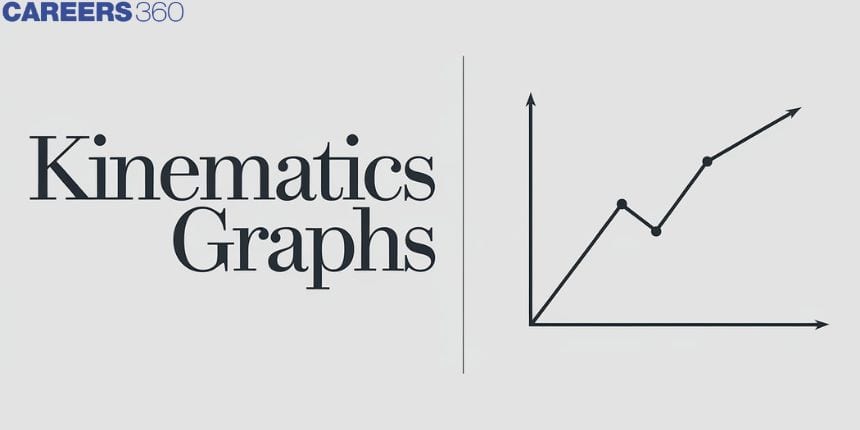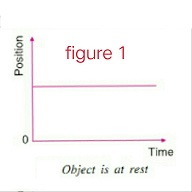Kinematics Graphs
Kinematics graphs are essential tools in physics, visually representing the motion of objects over time. These graphs, including position-time, velocity-time, and acceleration-time graphs, provide a clear and intuitive way to analyze how an object's position, speed, and acceleration change. Understanding these graphs is crucial because they translate complex equations into simple visual forms, making it easier to predict future motion and analyze past behaviour. In real life, kinematics graphs are used in various fields, such as tracking the speed of a car on a highway, analyzing the flight of a ball in sports, or even in the design of roller coasters, where engineers need to ensure smooth and safe transitions between different speeds and directions. By mastering kinematics graphs, we gain insights into the fundamental principles governing motion, which are applicable in everyday scenarios and advanced scientific research alike.
This Story also Contains
- I. Position Time Graph
- II. Velocity Time Graph
- III. Acceleration-Time Graph
- Solved Examples based on kinematics Graph
- Summary

I. Position Time Graph
The motion of an object can be represented by a position-time graph.
Such a graph is very useful to analyze different aspects of the motion of an object.
The slope of the position-time graph represents the velocity of the particle
Position Time Graph When the Body is at Rest

Figure 1 shows the position-time graph when the body is at rest
The position-time graph for the stationary objects is a straight line parallel to the time axis.
Position Time Graph for Uniform Motion

Figure 2 shows a position time graph for uniform motion.
Here the object is moving along a straight line and covers equal distances in equal intervals of time.
Position Time Graph for an Object in Non-Uniform Motion


Figures 3 and 4 show a position-time graph for non-uniform motion.
In figure-3, acceleration is positive and in Figure-4, acceleration is negative.
Here, the object moves along a straight line and covers an equal distance in an unequal time interval.
II. Velocity Time Graph
The graph is plotted by taking time t along the x-axis and the velocity of the particle on the y-axis.
The area of the velocity v/s time graph for the particular time interval gives the displacement and distance travelled by the body for a given time interval.
The slope of the velocity-time graph represents the acceleration of the particle.
When a Particle is Moving With Constant Velocity

Figure 5 shows constant velocity and zero acceleration.
For Uniform Acceleration of the Particle

Figure 6 shows constant positive acceleration.
III. Acceleration-Time Graph
The graph is plotted by taking time t along the x-axis and the acceleration of the particle on the y-axis.
The area of the acceleration v/s time graph for the particular time interval gives the change in velocity of the body for a given time interval.
The slope of the acceleration-time graph represents the jerk.
When a Particle Has Constant Acceleration

Figure 7 represents uniform positive acceleration
A Particle having Uniformly Increasing Acceleration

Figure 8 represents positive and uniformly increasing acceleration.
Recommended Topic Video
Solved Examples based on kinematics Graph
Example 1: The velocity-displacement graph describing the motion of a bicycle is shown in the figure.
The acceleration-displacement graph of the bicycle's motion is best described by :
1)

2)
3)
4)
Solution:
$\begin{aligned} & \text { For } 0 \leq \mathrm{x} \leq 200 \\ & \mathrm{v}=\mathrm{mx}+\mathrm{C} \\ & \mathrm{v}=\frac{1}{5} \mathrm{x}+10 \\ & \mathrm{a}=\frac{\mathrm{vdv}}{\mathrm{dx}}=\left(\frac{\mathrm{x}}{5}+10\right)\left(\frac{1}{5}\right) \\ & \mathrm{a}=\frac{\mathrm{x}}{25}+2 \Rightarrow \text { Straight line till } \mathrm{x}=200 \\ & \text { for } x>200 \\ & v=\text { constant } \\ & \Rightarrow a=0\end{aligned}$
So the correct graph is
Hence the answer is the option (2)
Example 2: In the given position-time graph, which of the following is correct

1) I - Positive acceleration
II - Negative acceleration
III - Zero acceleration
2) I - Positive acceleration
II - Zero acceleration
III - Negative acceleration
3) All represent positive acceleration.
4) Nothing can be concluded
Solution:
I - Slope (i.e. velocity ) is increasing hence acceleration is positive.
II - Slope is constant $\Rightarrow a=0$
III - Slope is decreasing $\Rightarrow a<0$
Hence the answer is the option (2)
Example 3: Figure shows the displacement time graph of two particles moving along the x-axis. We can say that.

1) Both particles are having a uniformly retarded motion.
2) Both the particles have an accelerated motion.
3) Particle (1) is having an accelerated motion while particle (2) is having a retarding motion.
4) Particle (1) is having a retarded motion while particle (2) is having an accelerated motion.
Solution:

In graph (1), the slope i.e. velocity is continuously increasing and hence it depicts accelerated motion.

In graph (2), the slope i.e. velocity is continuously decreasing and hence it depicts retarding motion.
Hence the answer is the option (3)
Example 4: A particle is moving with constant velocity along a straight line. The position time graph will look like
1)

2)

3)

4)

Solution:
The slope of the Position-time graph represents the velocity. For a particle moving with non-zero constant velocity, the graph will be a straight line (constant slope).
Hence the answer is the option (2)
Example 5: A particle is stationary its position time graph will look like
1)

2)

3)

4)

Solution
Position time graph for a stationary object
The position-time graph for the stationary objects is a straight line parallel to the time axis.
wherein

shows the position-time graph of a stationary object.
Hence the answer is the option (4)
Summary
Kinematics graphs, including position-time, velocity-time, and acceleration-time graphs, are crucial for understanding the motion of objects. They visually represent various aspects of motion, such as velocity and acceleration, helping to analyze both uniform and non-uniform motion. These graphs are used to determine key motion characteristics, like displacement, acceleration, and velocity, and they provide valuable insights into different types of motion, whether the object is at rest, moving uniformly, or accelerating. Solved examples further illustrate the application of these graphs in analyzing real-life scenarios.



